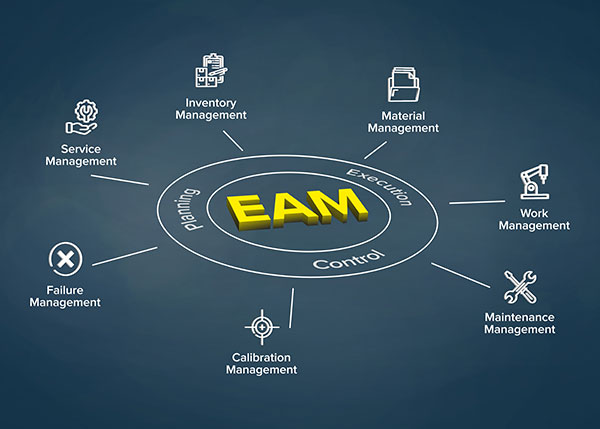EAM software, short for Enterprise Asset Management software, is a robust solution designed to manage an organization’s assets throughout their lifecycle. These assets could range from machinery and equipment to facilities and infrastructure. The primary goal of EAM is to maximize asset utilization, enhance efficiency, and minimize downtime through streamlined maintenance processes.
The Preventive Maintenance Paradigm
Preventive maintenance is a proactive approach to maintenance that focuses on addressing potential issues before they escalate into costly downtime. It systematically inspects services and repairs equipment regularly, ensuring optimal performance and longevity.
Aligning EAM with Preventive Maintenance
EAM acts as the backbone for effective preventive maintenance. By integrating with IoT devices and sensors, it enables real-time monitoring of asset conditions. This data-driven approach allows for predictive analytics, helping organizations anticipate potential failures and schedule maintenance activities strategically.
Key Features of EAM Software for Preventive Maintenance
1. Asset Tracking and Management
EAM provides a centralized platform for tracking and managing all assets. Every aspect of an asset’s life cycle is meticulously recorded from acquisition to disposal. This facilitates better planning for preventive maintenance schedules based on historical performance data.
2. Work Order Management
Efficient work order management is crucial for maintenance. EAM software automates the creation, assignment, and tracking of work orders. This ensures that maintenance tasks are executed promptly, reducing the risk of unexpected breakdowns.
3. Condition Monitoring
Real-time condition monitoring is a game-changer in preventive maintenance. It is equipped with IoT connectivity, enabling continuous monitoring of asset health. Any deviations from normal operating conditions trigger alerts, allowing maintenance teams to intervene before issues escalate.
4. Predictive Analytics
Harnessing the power of data, EAM employs predictive analytics to forecast potential failures. By analyzing historical performance data and patterns, organizations can schedule maintenance activities at the most reasonable times, minimizing disruptions to operations.
Implementing Preventive Maintenance with EAM Software
1. Assessing Asset Criticality
Identifying the criticality of assets is the first step in an effective preventive strategy. EAM software assists in categorizing assets based on their importance to operations, allowing organizations to prioritize maintenance efforts.
2. Defining Maintenance Plans
EAM software enables organizations to create detailed maintenance plans for each asset. These plans outline the specific tasks, schedules, and resources required for maintenance. Automation features ensure seamless execution.
3. Data-Driven Decision Making
Leveraging EAM, organizations can make informed decisions backed by real-time data. Whether it’s predicting the lifespan of a component or optimizing maintenance intervals, data-driven insights enhance decision-making in preventive maintenance.
4. Continuous Improvement
EAM software facilitates continuous improvement by capturing and analyzing data from completed maintenance activities. By identifying areas for enhancement, organizations can refine their strategies over time.
The Benefits of EAM-Driven Preventive Maintenance
1. Reduced Downtime
By addressing potential issues before they lead to breakdowns, EAM-driven preventive maintenance significantly reduces downtime. This ensures that assets are available and operational when needed, optimizing overall efficiency.
2. Extended Asset Lifespan
Regular maintenance, guided by EAM insights, extends the lifespan of assets. This maximizes the return on investment and defers the need for costly replacements or upgrades.
3. Cost Savings
Preventive maintenance is a cost-effective approach compared to reactive maintenance. EAM helps organizations allocate resources efficiently, minimizing unnecessary expenditures and maximizing cost savings.
4. Improved Safety and Compliance
Ensuring that assets are in optimal condition contributes to a safer working environment. Additionally, adherence to preventive maintenance schedules aids in meeting regulatory compliance standards.
Looking Ahead: EAM Software in Future Maintenance Practices
As industries evolve, so do maintenance practices. EAM software, with its constant innovation and adaptability, is poised to play a pivotal role in the future of maintenance. Integrating artificial intelligence, machine learning, and advanced analytics will further enhance the software’s capabilities, ushering in an even more precise and efficient maintenance era.
Conclusion:
In conclusion, the synergy between EAM and preventive maintenance catalyzes operational excellence. Organizations embracing this dynamic duo are equipped to tackle current challenges and future-proofing operations. As industries continue to evolve, investing in this software is not just a choice but a strategic imperative, propelling organizations toward unparalleled efficiency and success. Get this full potential for your assets and operations.

